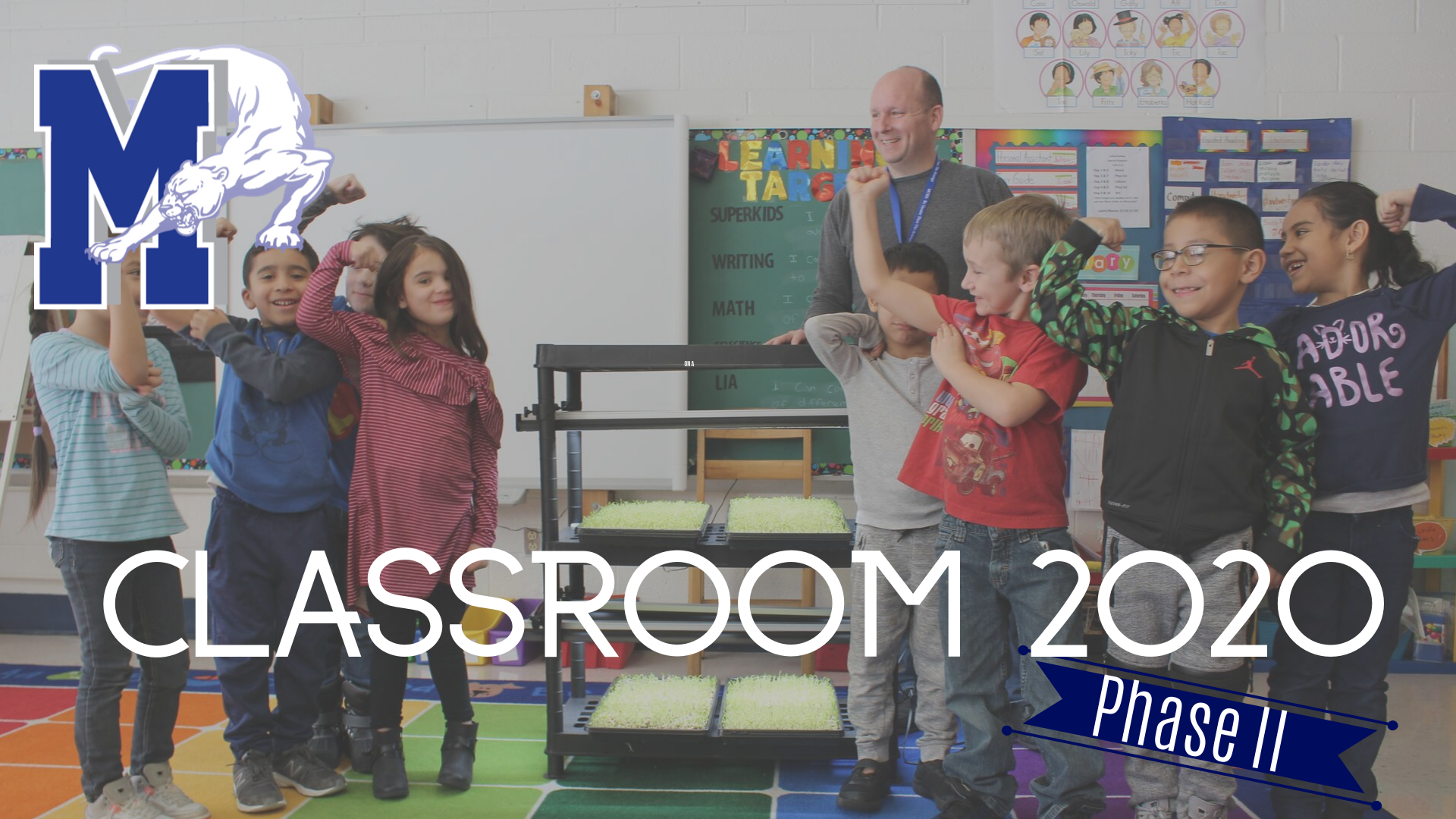Para traducir este texto al español, haga clic en “SELECT LANGUAGE” o la “G” de color arco iris en la parte superior derecha de este sitio web, y luego haga clic en “SPANISH“. Recuerde que este es un servicio de traducción automática, por lo que es posible que algunas palabras no se traduzcan correctamente.
Overview:
On Oct. 17, 2019, Monticello residents will vote on the $85.5 million Classroom 2020 Phase II Capital Project. This project will address the remaining needs of the district’s facilities that are not financed by the Phase I project that voters approved in November of 2018. For more information and/or updates about Phase I, please visit our Classroom 2020 Phase I webpage.
When/Where:
The vote will take place from 8 a.m. to 8 p.m. on Oct. 17 at all district polling locations. For more information about where to vote, voter eligibility and voting by absentee ballot, please visit the Voting in School Elections web page, or read the legal notice associated with the vote.
The last day to register to vote in the Classroom 2020 Phase II referendum is Oct. 10. There will be a Voter Registration Day held on Oct. 10 at all polling locations from 4 to 8 p.m. Qualified voters may also visit the district’s administrative offices, or the main office of any operating school during business hours before Oct. 10 to vote in this election.
To register, you must bring a photo ID, proof of address and a document that proves 30-day residency, such as a utility bill.
Why: An Overview
Protect our students
- Secured interior walkway at Monticello High School
- New main security entrance at the George L. Cooke Elementary School
- Structural repairs and renovations at the St. John’s Street Education Center and the Cornelius Duggan Elementary School
Build our communities
- Reopens the Cornelius Duggan Elementary School (pending NYS approval)
- Establishes a Universal Pre-K program at each elementary school
- Paves the way for the St. John’s Street Education Center to become a community-use space
Fix our facilities
- Relieves space and structural issues at each elementary school
- Fixes aging and outdated auditorium
- Repairs flooding, track and field concerns at our athletic facilities
- Corrects all issues using future-focused, flexible solutions that will adapt to the district’s needs as time passes
Learn more:
Join Board of Education members and district leaders at one of our upcoming open houses to learn more about Classroom 2020 Phase II, ask questions and tour our facilities.
Open houses:
- Sept. 7, 12:30 p.m., Monticello High School (gymnasium entrance)
- Sept. 11, 6 p.m., Cornelius Duggan Elementary School
- Sept. 24, 6:30 p.m., Kenneth L. Rutherford Elementary School
- Sept. 25, 6:30 p.m., Emma C. Chase Elementary School
- Sept. 26, 6 p.m., Robert J. Kaiser Middle School
- Oct. 2, 6:30 p.m., George L. Cooke Elementary School
- Oct. 10, 6 p.m., St John’s Street Education Center
Community events
There will also be a community presentation on Sept. 19 at 7:30 p.m. during the regular Board of Education meeting in the Robert J. Kaiser Middle School library.
In the months leading up to the vote, members of the Board of Education and district leaders will be present at various events throughout the community to speak with constituents about the Classroom 2020 Phase II Capital Project.
To schedule a Classroom 2020 presentation at your community event or group, call 845-794-7700, ext. 70523
In the mail
The Classroom 2020 Phase II edition of The Panther Post was mailed out to all residents in mid-September. Residents should receive a copy in their mail between Sept. 19 and Sept. 25.
For a digital copy of The Panther Post, please click here
A Closer Look: Elementary Schools
What’s Included in Phase II at the Elementary Schools?
Emma C. Chase Elementary School:
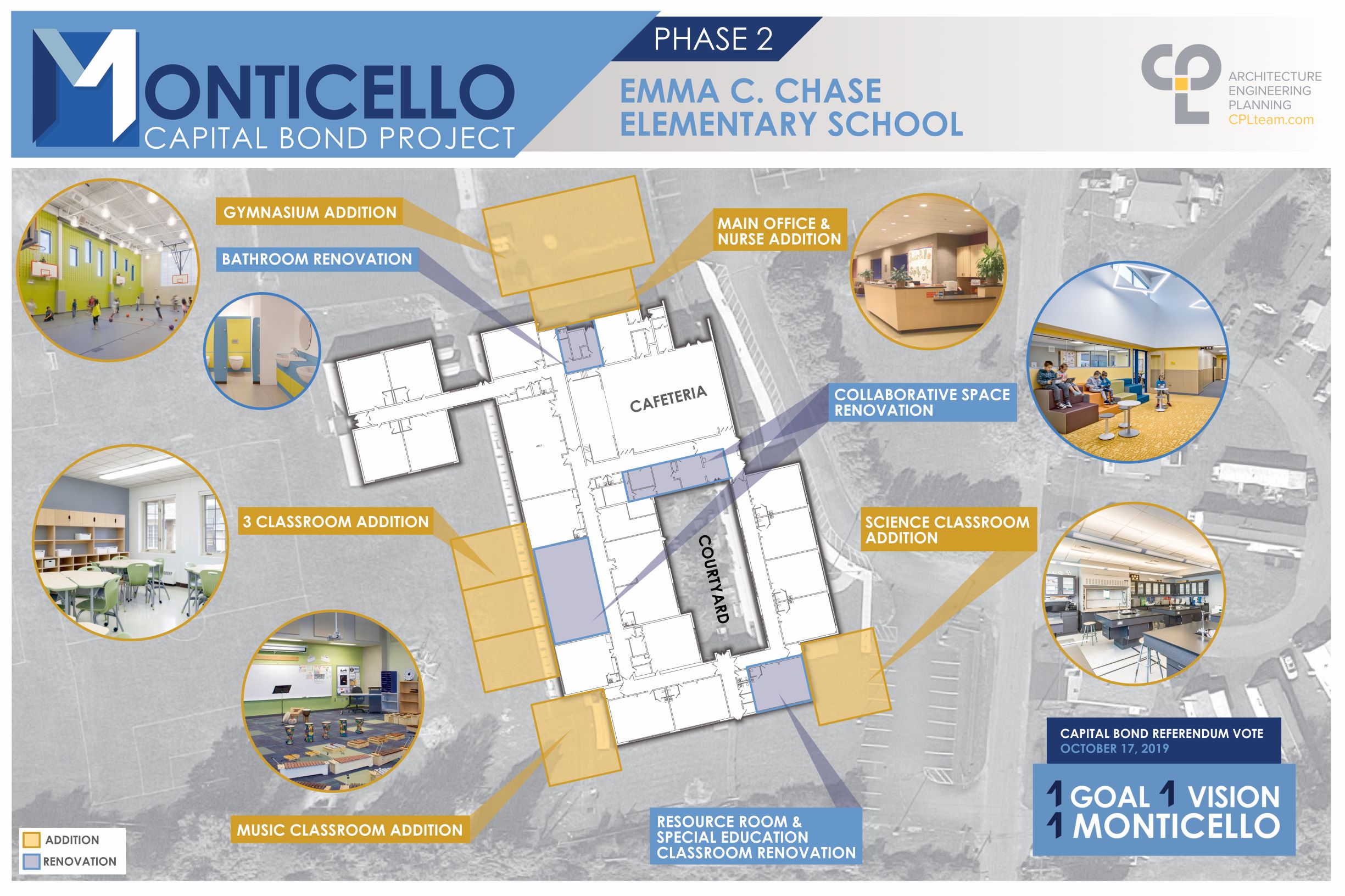
- Gymnasium Addition (2 Station)
- Science Classroom Addition
- Music Classroom Addition
- (3) Classroom Addition & Collaborative Space Renovation
- Resource Room & Special Education Classroom Renovation
- Collaboration Space Renovation (at existing main corridor/office area)
- New Bathrooms (Renovation adjacent to New Gym Addition)
- Main Office & Nurse Addition
George L. Cooke Elementary School:
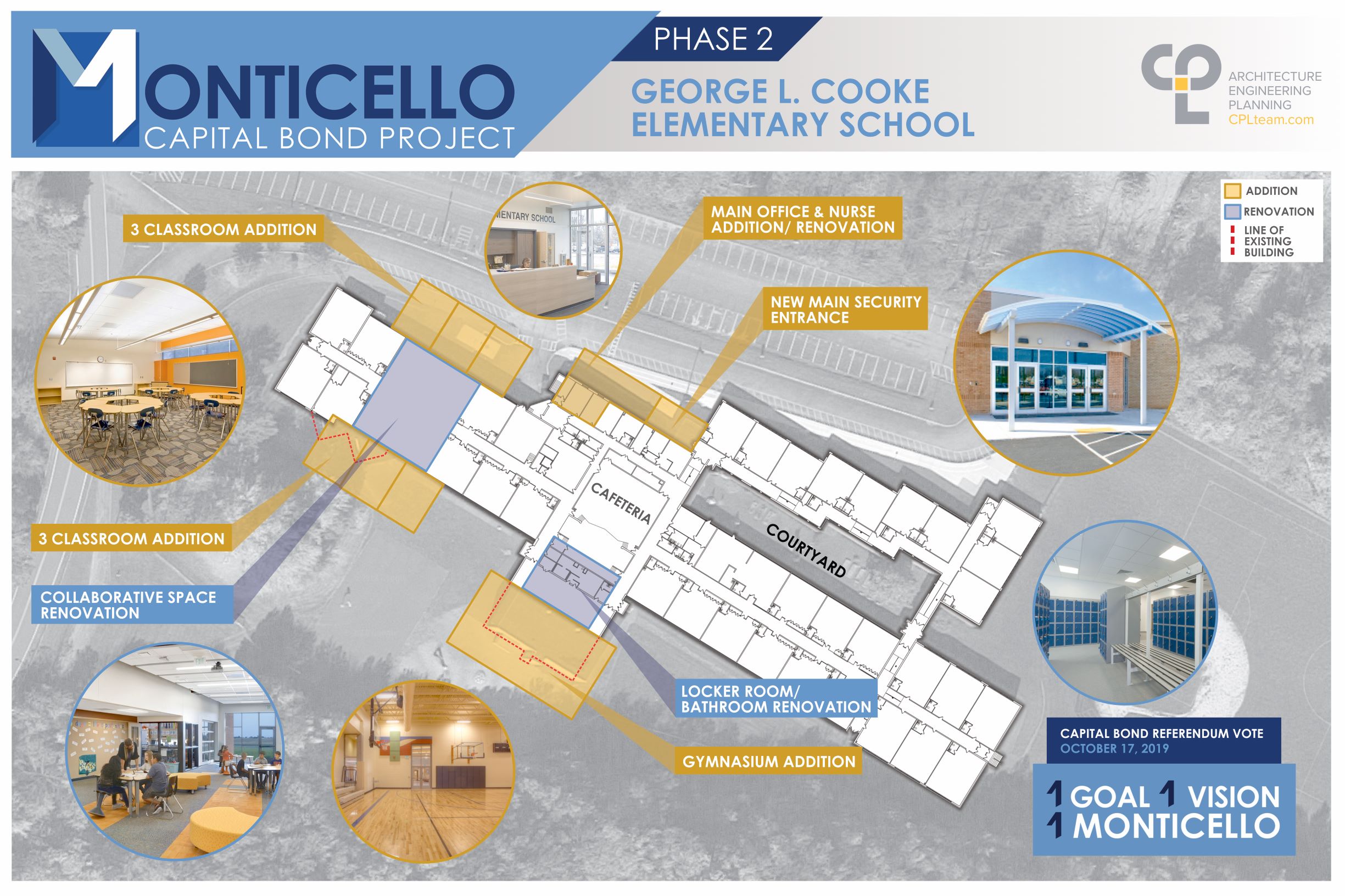
- New Main Security Entrance
- Main Office & Nurse Addition & Renovation
- Gymnasium Addition (3 Station) with New Locker Room / Bathroom Renovation
- (6) Classroom Addition & Collaborative Space Renovation
Kenneth L. Rutherford Elementary School:
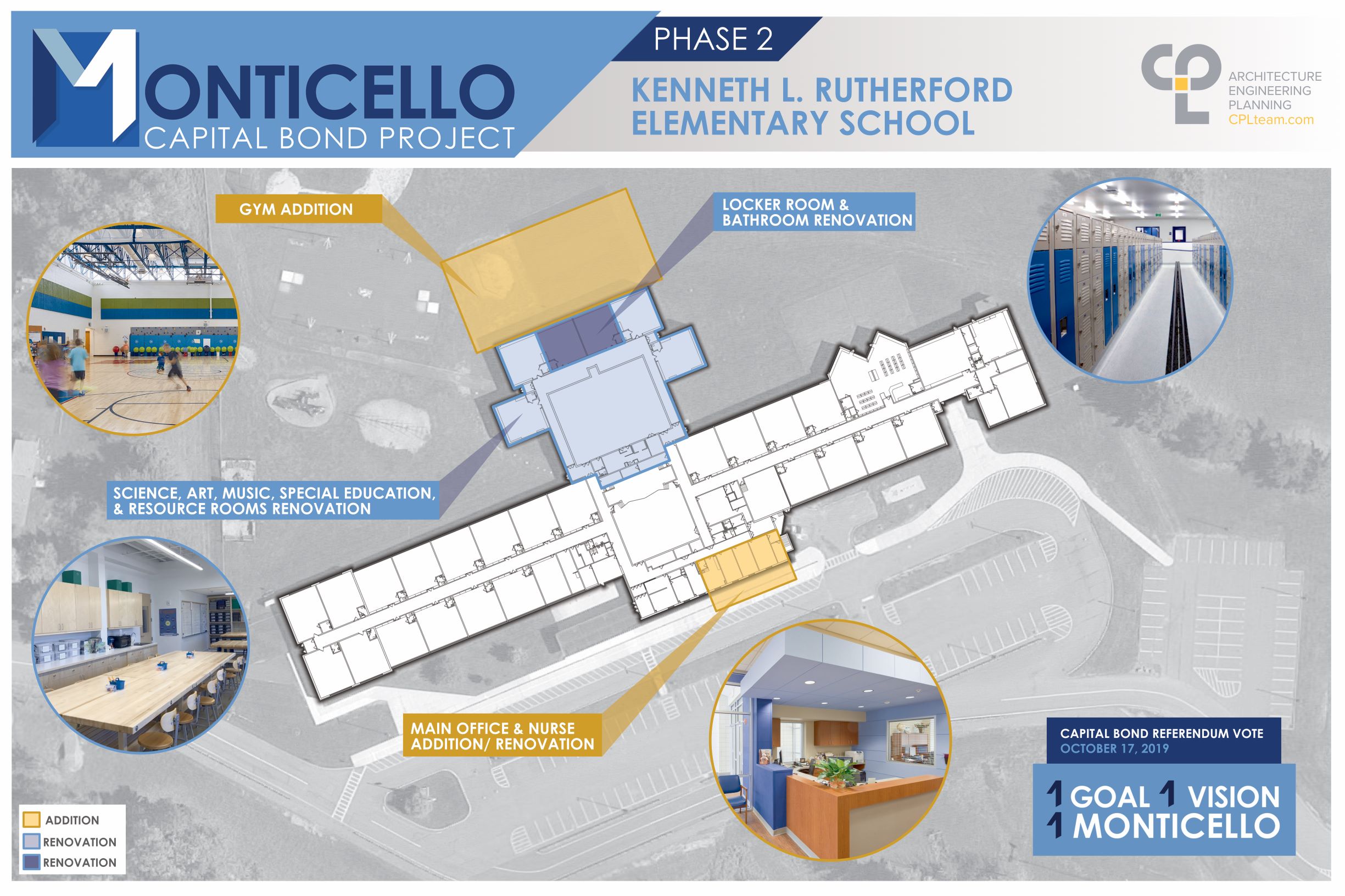
- Main Office & Nurse Addition & Renovation
- Music, Art, Science & Special Education Classroom Renovations (with Resource Room)
- Gymnasium Addition (3 Station) with New Locker Room / Bathroom Renovation
A Closer Look: Cornelius Duggan Elementary School and the St. John’s Street Education Center
What’s Included in Phase II at the Cornelius Duggan Elementary School and the St. John’s Street Education Center?
Cornelius Duggan Elementary School:
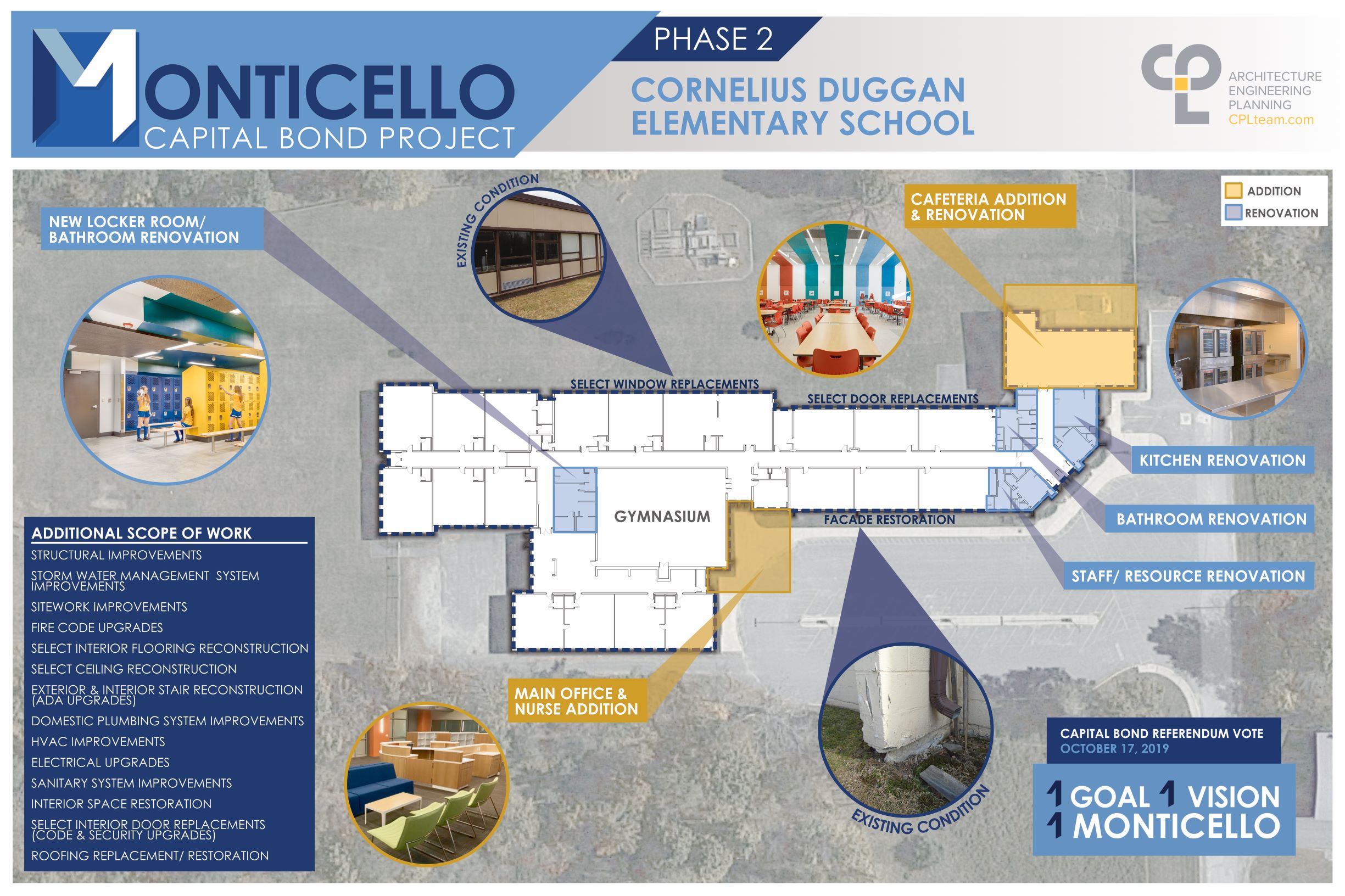
- Structural Improvements
- Storm Water Management System Improvements
- Site Work Improvements (Sidewalks, Curbing, Paving, Lighting, etc.)
- Building Façade Restoration
- Fire Code Upgrades
- Select Interior Flooring Reconstruction
- Select Ceiling Reconstruction
- Exterior & Interior Stairs Reconstruction/Improvements (ADA Upgrades)
- Domestic Plumbing System Improvements
- HVAC Improvements
- Electrical Upgrades
- Sanitary System Improvements
- Select Window Replacements
- Interior Space Restoration
- Select Interior/Exterior Door Replacements (Code & Security Upgrades)
- Roofing Replacement/Restoration
- Main Office & Nurse Addition
- New Locker Room / Bathroom Renovation (adjacent to Gymnasium)
- Staff Resource Room Renovation (at Existing Main Office Area)
- Kitchen Renovation
- New Bathroom Renovation (adjacent to Cafeteria)
- Cafeteria Addition & Renovation
St. John’s Street Education Center
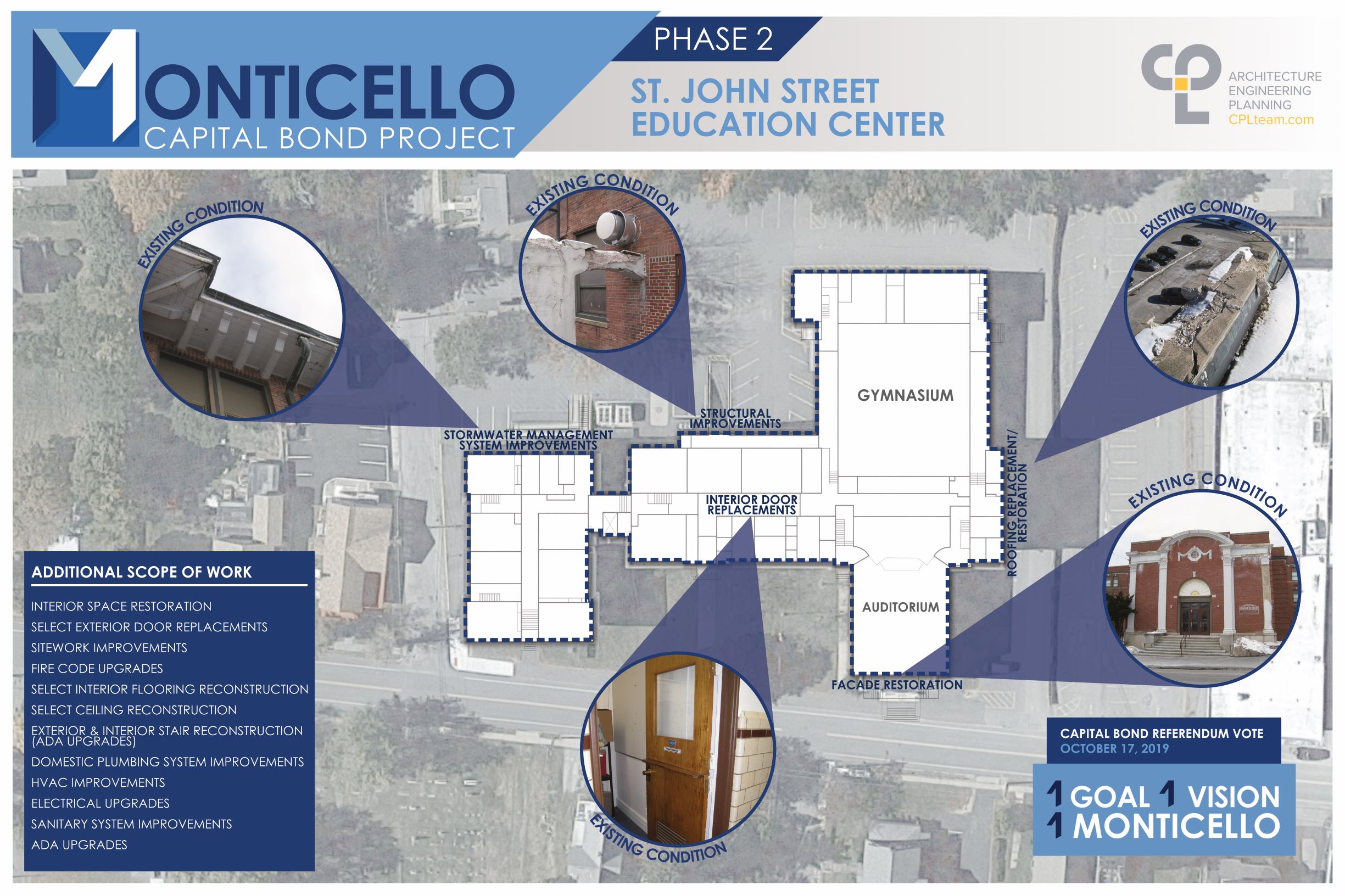
- Structural Improvements
- Storm Water Management System Improvements
- Site Work Improvements (Sidewalks, Curbing, Paving, Lighting, etc.)
- Building Façade Restoration
- Fire Code Upgrades
- Select Interior Flooring Reconstruction
- Select Ceiling Reconstruction
- Exterior & Interior Stairs Reconstruction/Improvements (ADA Upgrades)
- Domestic Plumbing System Improvements
- HVAC Improvements
- Electrical Upgrades
- Sanitary System Improvements
- ADA Upgrades
- Interior Space Restoration
- Select Interior/Exterior Door Replacements (Code & Security Upgrades)
- Roofing Replacement/Restoration
A Closer Look: Monticello High School and Athletics Facilities
What’s Included in Phase II at the Cornelius Duggan Elementary School and the St. John’s Street Education Center?
Monticello High School/Athletics Facilities
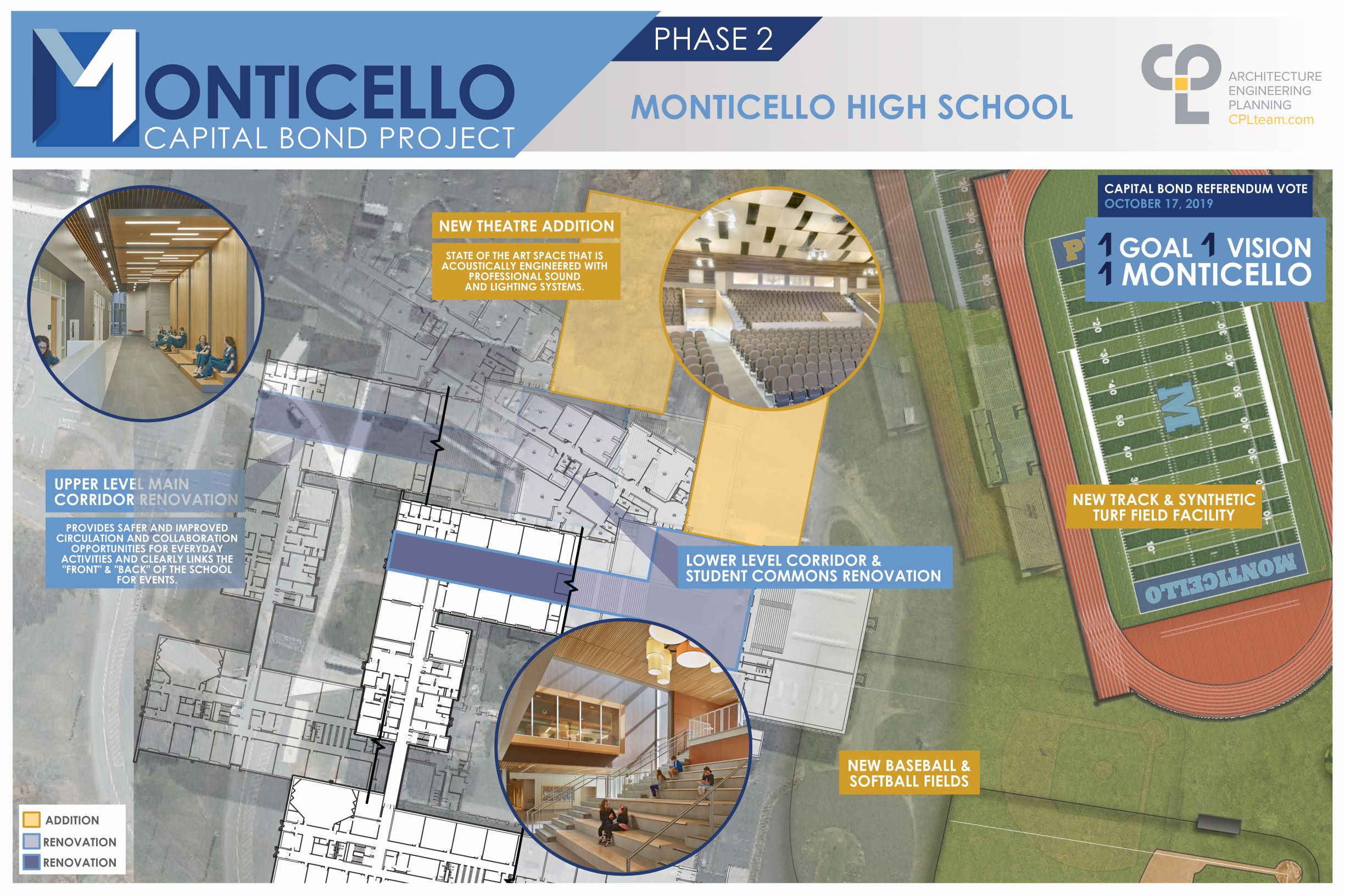
- Theatre Addition
- Interior Walkway
- New Track & Field Facility (Synthetic Turf Field, Track, Drainage, Grading, Fencing, etc.)
Dollars and Cents:
How will Classroom 2020 Phase II impact my taxes?
The estimated maximum annual tax impact is $2 per $1,000 in 2019 assessed home value.
Does this mean my taxes will immediately increase by $2 for each $1,000 in 2019 assessed home value?
NO! If Classroom 2020 Phase II is approved by voters, the district would not immediately bond out the full amount for the entire scope of the project. Rather, it will work with the architects and construction management team to organize the full scope of the capital improvement project into tasks, and then bond out just the amount to finance each task as it moves through the approval and construction process. The estimated $2 per $1,000 in 2019 assessed home value figure represents the absolute maximum impact that any taxpayer in the district can expect to see in any given year, during the life of the bond. The district expects many homeowners to see impacts below this $2 per $1,000 maximum, especially in the first few years of this project, due to the district’s diligence in pursuing cost-saving measures such as Energy Performance Contracts (see glossary below), application of capital reserve funds and variations in assessed values and equalization rates (see glossary below) among the different townships. The Board has no intention of exceeding the state’s 2 percent tax cap as a result of Classroom 2020 Phase II, and no Board could exceed the 2 percent cap without a minimum 60 percent voter approval rate.
Why aren’t these repairs factored in to the annual school budget?
New York state law mandates that districts can only spend up to $100k per year from its general fund on repairs and renovations and still receive aid on those funds. Repairs beyond $100k are totally funded by the tax levy. On the contrary, 52.7% of the cost of repairs and renovations that are organized as capital projects is reimbursed by state aid. In other words, if these projects were included in the annual budget, taxpayers would be responsible for 100% of the cost (see images below).
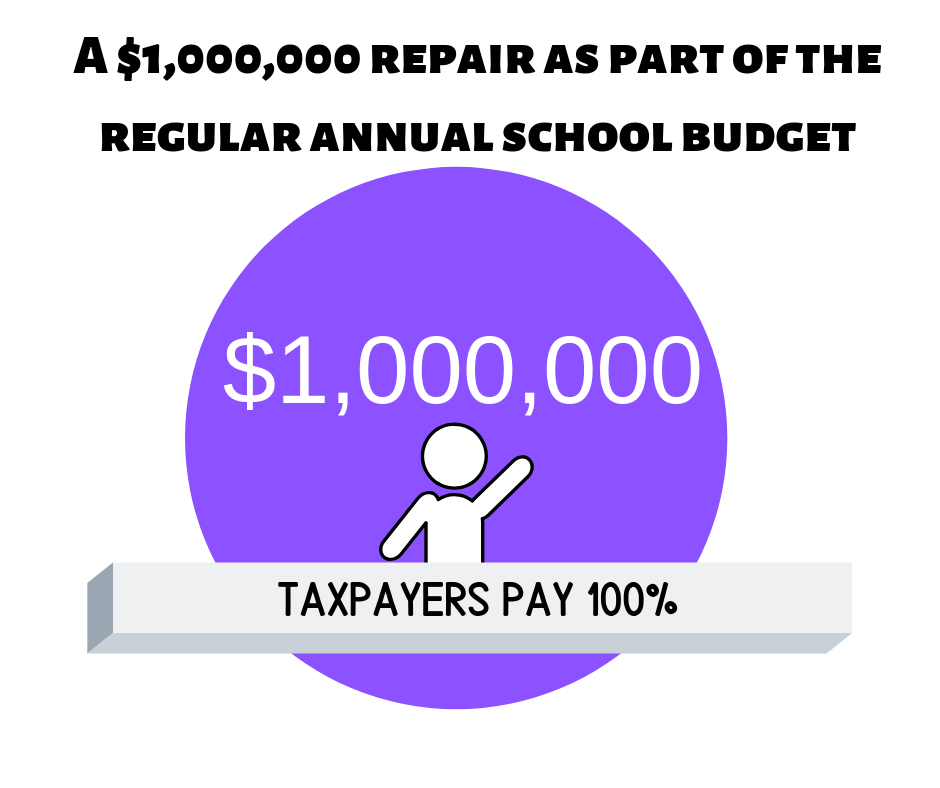
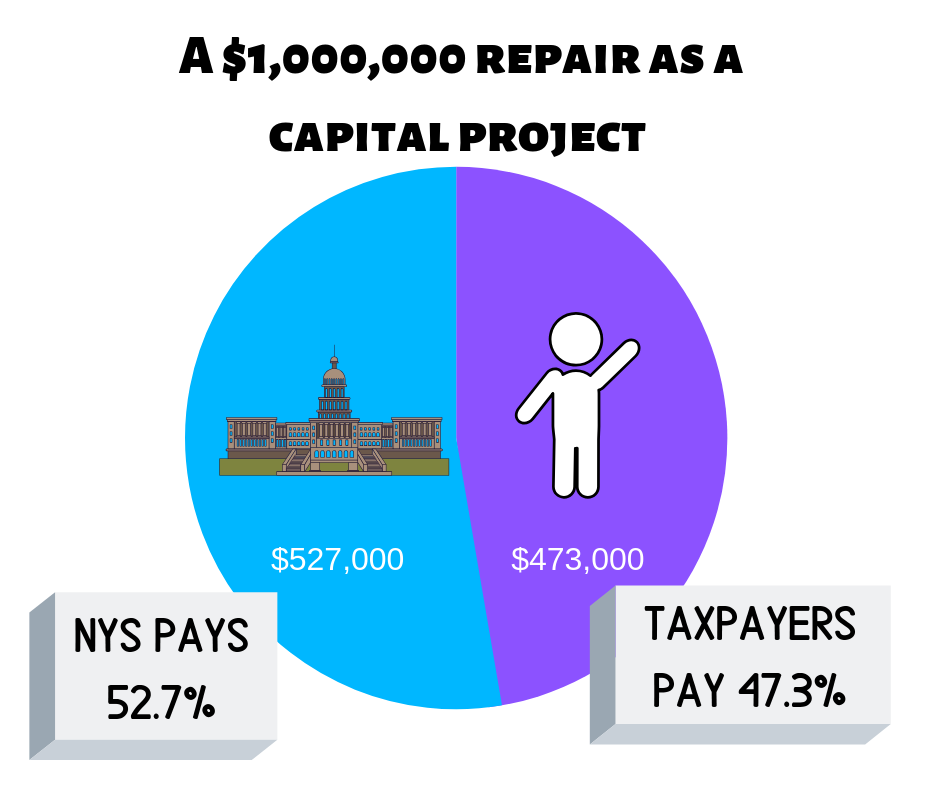
Glossary
Assessed Value:
The value of your property as determined by your local property assessor. This value can change based on your municipality’s equalization rate, the market, or during a municipality-wide reassessment. It is used to determine the amount of taxes owed and the amount of STAR exemption a homeowner is eligible to receive.
Energy Savings Performance Contracting:
A tool available to certain government and other public entities to fi nance equipment through energy savings.
Equalization Rate:
In simple terms, an equalization rate represents the average level of assessment in each community. For example, an equalization rate of 80 means that on average, the property in a community is being assessed at 80% of its market value. The words ‘on average’ are stressed to emphasize that an equalization rate of 80 does not mean that each and every property is assessed at 80% of full value. Some may be assessed at lower than 80%, while others may be assessed at higher than 80%.
Equalization rates are established by the New York State Board of Equalization and Assessment. School districts that comprise
more than one city, town or village must use the equalization rate to determine the tax rates for each municipality. The purpose is to bring some semblance of equity to how the taxes are distributed in any one school district, so that ideally a home with a full market value of $100,000 in one community will pay the same taxes as a home with a market value of $100,000 in the next community, regardless of how those two homes are assessed.
Equalization rates for the district’s towns are sent to the school district by late August.

